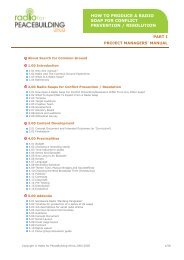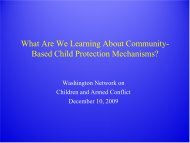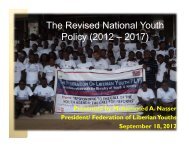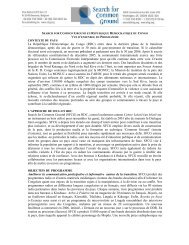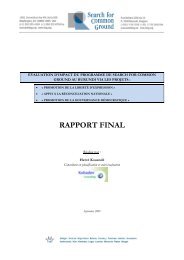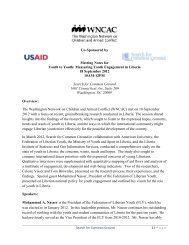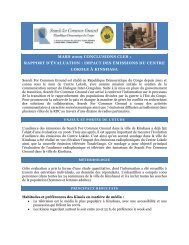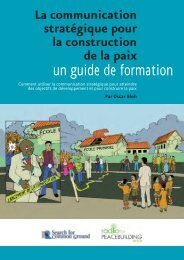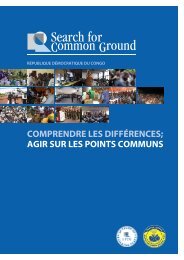The Common Ground Network for Life and Choice Manual
The Common Ground Network for Life and Choice Manual
The Common Ground Network for Life and Choice Manual
You also want an ePaper? Increase the reach of your titles
YUMPU automatically turns print PDFs into web optimized ePapers that Google loves.
direct involvement with teen pregnancy prevention came from the invited participants who were<br />
identified through extensive interviews with knowledgeable people in the community.<br />
<strong>The</strong> meeting process designed by the <strong>Network</strong> combined the key elements of common<br />
ground dialogue with established methods <strong>for</strong> generating ideas <strong>and</strong> options <strong>and</strong> arriving at<br />
concrete action steps in a large <strong>and</strong> diverse group. Participants were given a grounding in the<br />
concepts <strong>and</strong> ground rules we use <strong>for</strong> abortion-related dialogue, but with the issue being teen<br />
pregnancy prevention. <strong>The</strong> same level of care was taken in recruiting a balance of participants<br />
<strong>and</strong> in <strong>for</strong>ming discussion groups <strong>and</strong> the teen <strong>and</strong> parent panels. We insured that there was a<br />
diversity of backgrounds <strong>and</strong> perspectives on teen pregnancy prevention <strong>and</strong> that the poles in the<br />
debate were represented. We were also intentional about placing in the same group individuals<br />
who would particularly benefit from having lines of communication opened between them.<br />
As hoped, new networks <strong>and</strong> alliances were <strong>for</strong>ged at this event. Since 1996, two more<br />
similar projects have taken place in partnership with the National Campaign to Prevent Teen<br />
Pregnancy, a national non-profit organization. Appendix 5.3 is the design of what we now call<br />
the Structured Community Dialogue (SCD) process as we used it in a project in Arizona in early<br />
1999. (A description of an earlier SCD in San Bernardino, Cali<strong>for</strong>nia appears in the Campaign’s<br />
publication, “While the Adults are Arguing the Kids are Getting Pregnant”.) Contact<br />
in<strong>for</strong>mation <strong>for</strong> the Campaign is in Chapter 9.<br />
<strong>The</strong> day <strong>and</strong> one-half long design is ambitious <strong>for</strong> what it aims to achieve in that space of<br />
time, but we decided upon this meeting length when we concluded that this was the maximum<br />
feasible if we wanted to get optimum community representation. <strong>The</strong> full agenda put a premium<br />
on recruiting skilled small group facilitators (we were able to recruit a fine volunteer team) <strong>and</strong><br />
giving them a thorough orientation. A team of two h<strong>and</strong>led the lead facilitation. <strong>The</strong> number of<br />
SCD participants has ranged from 50 to 100.<br />
Addressing a Pressing Local Issue<br />
<strong>The</strong> presence of a pressing local issue, particularly one on which the pro-life/pro-choice



